Does fat burning make you lose weight?

Raise your hand if you keep going on a yearly diet to shed some pounds but keep finding it hard to accomplish your goals. If this struggle sounds familiar, you may have investigated alternative methods to support weight loss instead of sustaining yourself on salad greens and air. A seemingly miraculous solution you may have stumbled upon is a fat burner. These pills are typically said to melt the unwanted kilos, and after a description like that, anyone would want to give a fat burner a try. If you’ve ever been curious about fat burners and what they can do for your journey and body, this post is for you.
Can You Burn Fat And Build Muscle at the Same Time?
Body recomposition, or the act of burning fat and building muscle at the same time, sounds ideal. After all, converting fat into muscle mass will not only make you feel better but also make you look toned and lean. But is it actually feasible?
Yes! The practice comes from bodybuilders, who have developed techniques to do that. You can combine the proper training and eating methods to lose weight and gain muscle.
And the good news doesn’t stop there. It appears to be possible for those starting out and those who are already actively training. Therefore, no matter where you are in your fitness journey, you can achieve the body goal of your dreams.
Benefits Of Losing Fat And Gaining Muscle
Why might you want to learn how to gain muscle and lose weight?
One of the obvious reasons that you may think of is your appearance. Improving your body composition can undoubtedly help you get closer to your ideal. After all, it's good to continuously work on yourself.
However, that's not the only reason you may want to lose weight and gain muscle. There are also many health benefits associated with this change.
Gaining muscle can be beneficial in the following ways:
- It can increase your lean body mass. This affects many parameters of your day-to-day life. For example, it can increase the amount of calories you burn daily.
- Building muscle can increase bone strength, which can lower the risk of bone injury.
- It can help you age better. Increased muscle is beneficial when we age, as we naturally lose some muscle with age. In addition, it can help lower the risks of injury.
Losing weight can also be beneficial for you as:
- It can help you improve your cardiovascular health. Weight loss can help lower blood pressure and "bad" cholesterol levels.
- It can help you sleep better. Some people with excess weight may find themselves struggling to sleep due to sleep apnea. This can be improved with weight loss.
- It can improve your overall quality of life.
- It can support your mental health.
- It may benefit your fertility and improve your sexual life.
- It can improve your life span and lower the risks of many diseases.
There are obviously many benefits to both losing weight and building muscle. Now, let's dig into the real question—how to gain muscle and lose weight.
Workouts for Losing Fat and Gaining Muscle
Both muscle gain and weight loss require exercise. Exercise is obviously essential for you. It helps keep us healthy in general. However, it's necessary for those who want to lose fat and gain muscle.
Strength training is key to building muscle and is also beneficial for weight loss. Resistance training provides our muscles with the stimulus to grow. Our muscles need to be challenged to kickstart their synthesis. Learn more about the science of this process in our "How Muscle Works" post.
Resistance training also helps prevent muscle loss in a calorie deficit. One issue with losing weight is that you risk muscle loss due to insufficient calorie intake. Strength training can be a great strategy to mitigate this.
Start off with training three times a week, ensuring that you’re targeting your whole body equally. For those who are more experienced with strength training, more days or a more intense workout plan may be beneficial. Remember to increase weight gradually – if you’re finding your workouts too easy, you’re not using a heavy enough weight.
Cardio is an important part of losing weight and gaining muscle, too. Many people think that cardio exercises help lose weight but not gain muscle. However, that's not true. Cardio can help you build muscle, but it may be slower.
It's essential to add some cardio to your routine. It can help you burn extra calories to assist weight loss efforts. High-intensity interval training (HIIT) can be a great way to get your blood pumping and help you with weight loss. A 2023 review suggests that it can improve fat-free mass and lower body fat percentage.
Finally, don't forget to add mobility and flexibility to your routine. These types of workouts may not contribute to muscle-building or weight loss, but they can be great for recovery and increase your range of motion. This can help you with better technique in your lifts, ensuring you're lowering your risk of injury.
Here are some tips for getting the most out of your workouts:
- Make them fun. This may mean you need to occasionally switch things up with a new set of exercises.
- Properly warm up and cool down can help lower your risk of injury. Before your training, it's a good idea to include passive and dynamic stretches.
- Do what you enjoy. There's no point in swimming if you enjoy running, even if one exercise may burn more calories than another.
- Ask for help. No one is born knowing everything in the gym or on the court. Don't be afraid to ask for help, whether it's about technique or something else. Use professional support, like a coach or a personal trainer, if you have access to them.
- Don’t neglect recovery. Recovery is an essential part of any workout. You must support your body after a training session. Read on to learn more about recovery.
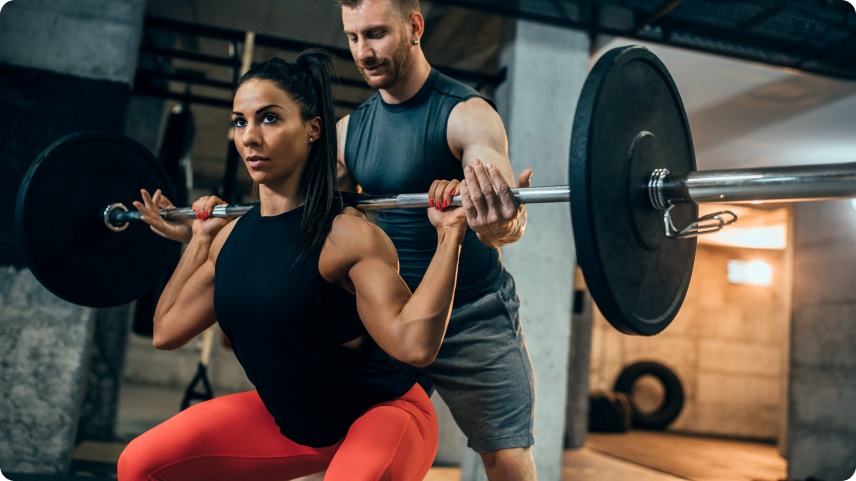
Now that we’ve cleared up our exercise routine, let’s jump into diet.
Diet for Losing Fat and Gaining Muscle
Diet is arguably one of the most critical aspects of building muscle and losing fat. What does a healthy diet to lose weight and gain muscle involve?
First of all, let's start with the basics. You consume a certain number of calories during the day. If you consume the same as you burn, then you're in a calorie balance. It's good to be in a calorie deficit when we lose weight. This means eating fewer calories than you burn. For building muscle, it's best to be in a small surplus or eat slightly more calories than you burn.
This creates the first paradox of the necessary calories to lose weight and gain muscle.
The good news is that you don’t quite need to be dieting to lose weight and gain muscle. It appears that calorie deficits of 500 calories can impair lean muscle growth. You’re better off with a small deficit of a few hundred calories or just continuing with your maintenance calories for a bit.
Alternatively, you can employ a calorie cycling approach. This means alternating days of calorie restriction with days of maintenance calories. This approach can support weight loss without affecting your body's calorie-burning capacity. Eat at maintenance on the days you work out and restrict on the days you don’t.
Protein intake is another crucial aspect of the "lose weight and gain muscle" diet. Protein is vital for weight loss as it helps keep us full. In addition, protein prevents lean muscle wastage. This macronutrient is also essential for muscle growth, as it provides building blocks for muscle tissue.
You must increase protein to lose weight and gain muscle. You can gain muscle by eating between 1.6 and 2.0 grams of protein per kilo of your weight. Make sure you get protein regularly throughout the day and plan your meals around protein sources.
Learn more about protein and its relation to muscle growth here.
The rest of your meals should contain plenty of slow-digesting carbohydrates, fiber, and adequate amounts of fat.
Remember that any meal plan to lose weight and gain muscle must include sufficient micronutrients. Therefore, you should focus on including enough veggies and fruits on a day-to-day basis.
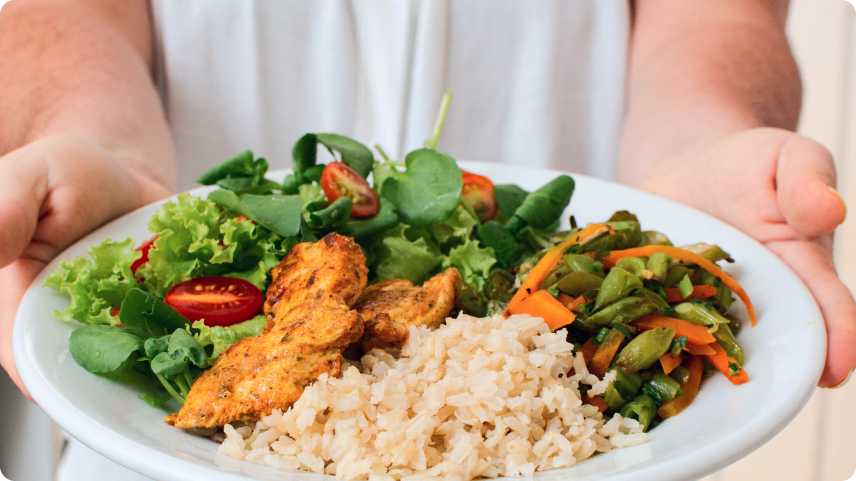
How Long Before Working Out Should You Eat?
Before we get into the details of when to eat before the gym, we need to understand why we need to eat in the first place. In order to work out well, we need to have sufficient energy to do so. That’s why before you head into the gym, you need to make sure that your body has enough energy to perform well, so it’s a good idea to have a snack. Most of this energy will come from carbohydrate.
How long before a training session do you have your meals? How long you eat before the gym session will largely depend on your body and how you feel after eating. However, there are certain guidelines that can serve most people.
If you’re planning on a substantial meal, it’s best to eat it about 3-4 hours before you work out. That will give you enough time to digest without causing any issues.
For a smaller snack, the ideal window is about an hour or two before you train. Should you want to train before having breakfast for example, it’s a good idea to have a small snack that you can easily digest a little before you train.
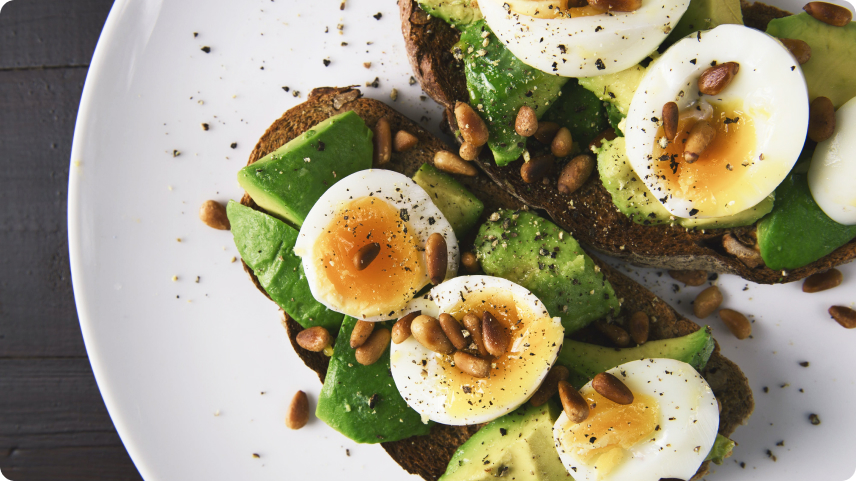
Now that you understand the timings of when to eat, the next question that comes up naturally is what should you have before you train.
What to eat before a workout
As a rule of thumb, no matter what you decide you will eat, you need to ensure that your healthy foods and snacks fall into your daily calorie goals. This will ensure that you’re meeting your nutritional goals alongside your work out goals.
Let’s talk about what you should eat if you’re planning to eat a meal before training.
A pre-training meal should consist of all the macros, including carbs, protein, and fats. This can be your standard meal at that time of the day. Choose leaner sources of protein where you can and don’t go overboard on the fats. You can load up on carbohydrate here if you want to, but if you follow a certain macronutrient split for most meals, you can use it for this one as well.
The pre-workout snack is the one that requires more attention. About two hours before a training session, your aim is to replenish your body’s energy with carbohydrate. However, there are a few things to keep in mind:
- Your snack shouldn’t be rich in fats as they’re slow to absorb
- Your snack shouldn’t be rich in fiber either
- If you’re having protein in your snack, choose lean sources and smaller protein portions
- Your focus should be on carbohydrate, especially complex carbs
So, what can that look like for you? There is a large variety of things you can eat for your pre-workout snacks, such as:

What Are Fat Burner Supplements?
We’ve all been seduced by the appeal of a pill that can transform our body into exactly what we want. Fat burners are a group of supplements that promise to do exactly that – it’s as if they’ll wave a magic stick and burn the unwanted flab and fats from your body. They can be a great help for those that struggle with losing unwanted pounds, however, it’s important to understand which ones of them work and which ones you should watch out for.
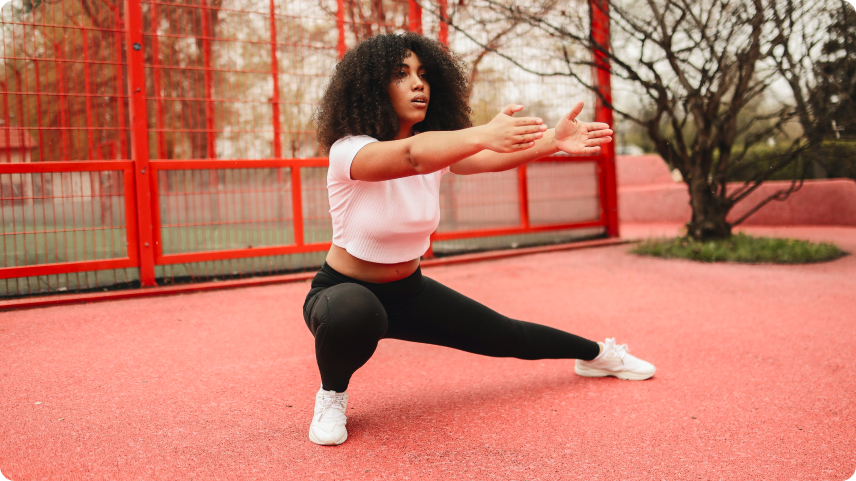
How Fat Burners Work
Before getting into the nitty gritty of how fat burners do the things they do, it’s key to understand what weight loss entails.
Theoretically, weight loss is simple – you just need to get less energy from your diet than you spend during the day. However, many people find it difficult to put this into practice – sometimes your lifestyle might get in the way, other times things arise and your focus shifts elsewhere. Or the changes everyone advises you on might simply not work for you. A particular diet might leave you constantly hangry or you simply might not have the energy to spend hours playing sport to help with weight loss.
With all that being said, decreasing the amount of fat you have, lowering your weight and helping your body maximize its potential is still possible. It requires dedication, a nutritional approach that is useful and effective for you, and a will to increase your activity levels. Should you want extra support, effective fat burners can be used to assist you.
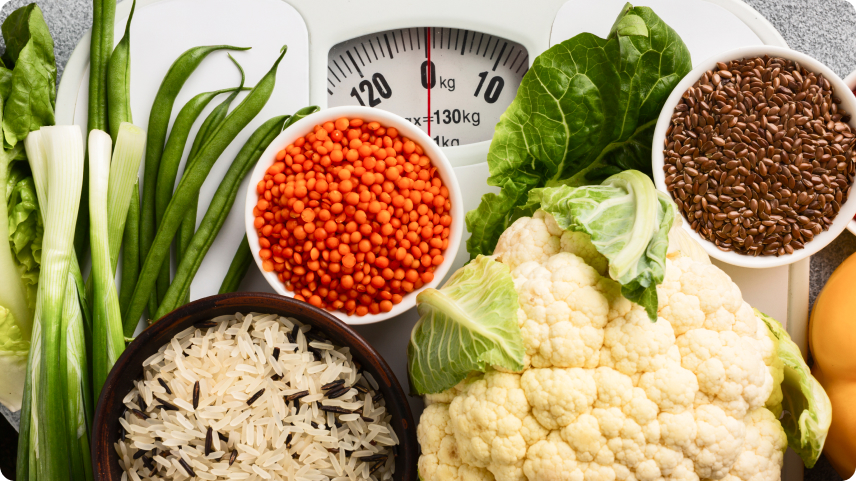
How does a fat burner function? There are many different burners and they have different methods of action. However, in general, they increase the amount of energy your body uses. They can also help the body use fats for fuel more efficiently, which can assist with lowering your fat amounts, or they might just stop you from taking in fats altogether. Whether or not they’re always effective is a different story, as some of them may carry risks with their use. Fat burner supplements can be made from one active ingredient or more than one, so it’s also key to be aware of what every ingredient might do. To assist you in making choices that work for you, it’s a great idea to explore common fat burners on the market currently.
Common Fat Burners
Each person has their own goals, habits and preferences. It is therefore essential to understand how a fat burner can contribute to the realization of your specific goals. To help you choose from the tons available, we’ll cover common ones so you know how they function and feel empowered to make choices for your benefit.
Ephedra
One of the greatest hits of the 2000s was an Asian herb called Ephedra sinica, or ma huang. It held promise in being the next big thing for fat burners. This herb contains a compound called ephedrine, which is what gives it its fat burner properties. It works in a couple of ways.
After taking it, your muscles spend more energy, which increases how many calories you burn on a day-to-day basis by almost 4%, increasing metabolism. Additionally, it causes a type of fatty tissue in the body called brown adipose tissue to increase its action, helping you melt your fatty stores.
However, alongside these beneficial properties, it has some weaknesses, which include its effect on our heart health. These side effects and some individual cases have caused the banning of this fat burner by the FDA and certain other countries.
Orlistat
This fat burner is actually a type of medicine. It best functions when combined with restriction of energy intake to support loss of fat. It is often used for those who are already overweight and have additional health concerns due to that.
This fat burner works in a different way to many of the other fat burners mentioned in this post. Instead of making the body use more fat for energy and boosting metabolism, this one stops the uptake of fats from the foods we eat.
A benefit to this fat burner is that since it’s a drug, it’s FDA approved. However, it is usually prescribed.
L-Carnitine
This supplement has been a bit controversial in the fat burner field. L-carnitine has a weird name, but it’s similar to a vitamin – it’s an amino acid that has undergone some changes. The main use of this compound is in shuttling fats. What that means is that it acts like a taxi, transporting fats in the cell into mitochondria, where they will be used to make energy. Additionally, it assists with metabolism related to glucose.
However, an investigation into 37 controlled trials showed that there is a positive effect of supplementing this substance and weight loss, as it reduces weight, fat mass, and BMI.
A reminder for those planning its use as a long-term solution - the longer you take it for, the less the effect may be.
Caffeine
Did you know that over 150 million people in the US consume coffee? If you’re part of that club, then you might be drinking a fat burner without even knowing it.
The compound responsible for the biggest fat burning effects seems to be caffeine, although it’s not the only beneficial thing found in this beverage. Drinking caffeinated coffee regularly can support lower levels of fat in the body, but this effect hasn’t been noted in decaf drinkers. Doubling coffee consumption also doubles the benefits in this case.
You might be curious about its mode of function. The levels of certain chemical messengers which stimulate the brain and lead to lower weight are increased by it. Additionally, it literally burns fat, assisting with lipid use for energy release in the body. A trick to get the most out of this fat burner is to pair it with exercise. That’s because during sporting activity the stimulant can help use more fat for fuel, helping you get rid of the pounds quicker.
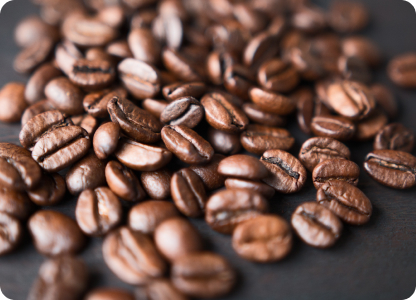
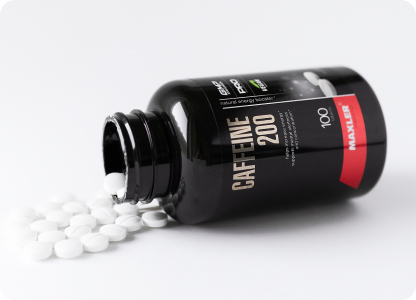
Can You Burn Fat And Build Muscle at the Same Time?
Body recomposition, or the act of burning fat and building muscle at the same time, sounds ideal. After all, converting fat into muscle mass will not only make you feel better but also make you look toned and lean. But is it actually feasible?
Yes! The practice comes from bodybuilders, who have developed techniques to do that. You can combine the proper training and eating methods to lose weight and gain muscle.
And the good news doesn’t stop there. It appears to be possible for those starting out and those who are already actively training. Therefore, no matter where you are in your fitness journey, you can achieve the body goal of your dreams.
Benefits Of Losing Fat And Gaining Muscle
Why might you want to learn how to gain muscle and lose weight?
One of the obvious reasons that you may think of is your appearance. Improving your body composition can undoubtedly help you get closer to your ideal. After all, it's good to continuously work on yourself.
However, that's not the only reason you may want to lose weight and gain muscle. There are also many health benefits associated with this change.
Gaining muscle can be beneficial in the following ways:
- It can increase your lean body mass. This affects many parameters of your day-to-day life. For example, it can increase the amount of calories you burn daily.
- Building muscle can increase bone strength, which can lower the risk of bone injury.
- It can help you age better. Increased muscle is beneficial when we age, as we naturally lose some muscle with age. In addition, it can help lower the risks of injury.
Losing weight can also be beneficial for you as:
- It can help you improve your cardiovascular health. Weight loss can help lower blood pressure and "bad" cholesterol levels.
- It can help you sleep better. Some people with excess weight may find themselves struggling to sleep due to sleep apnea. This can be improved with weight loss.
- It can improve your overall quality of life.
- It can support your mental health.
- It may benefit your fertility and improve your sexual life.
- It can improve your life span and lower the risks of many diseases.
There are obviously many benefits to both losing weight and building muscle. Now, let's dig into the real question—how to gain muscle and lose weight.
Workouts for Losing Fat and Gaining Muscle
Both muscle gain and weight loss require exercise. Exercise is obviously essential for you. It helps keep us healthy in general. However, it's necessary for those who want to lose fat and gain muscle.
Strength training is key to building muscle and is also beneficial for weight loss. Resistance training provides our muscles with the stimulus to grow. Our muscles need to be challenged to kickstart their synthesis. Learn more about the science of this process in our "How Muscle Works" post.
Resistance training also helps prevent muscle loss in a calorie deficit. One issue with losing weight is that you risk muscle loss due to insufficient calorie intake. Strength training can be a great strategy to mitigate this.
Start off with training three times a week, ensuring that you’re targeting your whole body equally. For those who are more experienced with strength training, more days or a more intense workout plan may be beneficial. Remember to increase weight gradually – if you’re finding your workouts too easy, you’re not using a heavy enough weight.
Cardio is an important part of losing weight and gaining muscle, too. Many people think that cardio exercises help lose weight but not gain muscle. However, that's not true. Cardio can help you build muscle, but it may be slower.
It's essential to add some cardio to your routine. It can help you burn extra calories to assist weight loss efforts. High-intensity interval training (HIIT) can be a great way to get your blood pumping and help you with weight loss. A 2023 review suggests that it can improve fat-free mass and lower body fat percentage.
Finally, don't forget to add mobility and flexibility to your routine. These types of workouts may not contribute to muscle-building or weight loss, but they can be great for recovery and increase your range of motion. This can help you with better technique in your lifts, ensuring you're lowering your risk of injury.
Here are some tips for getting the most out of your workouts:
- Make them fun. This may mean you need to occasionally switch things up with a new set of exercises.
- Properly warm up and cool down can help lower your risk of injury. Before your training, it's a good idea to include passive and dynamic stretches.
- Do what you enjoy. There's no point in swimming if you enjoy running, even if one exercise may burn more calories than another.
- Ask for help. No one is born knowing everything in the gym or on the court. Don't be afraid to ask for help, whether it's about technique or something else. Use professional support, like a coach or a personal trainer, if you have access to them.
- Don’t neglect recovery. Recovery is an essential part of any workout. You must support your body after a training session. Read on to learn more about recovery.

Now that we’ve cleared up our exercise routine, let’s jump into diet.
Diet for Losing Fat and Gaining MuscleDiet is arguably one of the most critical aspects of building muscle and losing fat. What does a healthy diet to lose weight and gain muscle involve?
First of all, let's start with the basics. You consume a certain number of calories during the day. If you consume the same as you burn, then you're in a calorie balance. It's good to be in a calorie deficit when we lose weight. This means eating fewer calories than you burn. For building muscle, it's best to be in a small surplus or eat slightly more calories than you burn.
This creates the first paradox of the necessary calories to lose weight and gain muscle.
The good news is that you don’t quite need to be dieting to lose weight and gain muscle. It appears that calorie deficits of 500 calories can impair lean muscle growth. You’re better off with a small deficit of a few hundred calories or just continuing with your maintenance calories for a bit.
Alternatively, you can employ a calorie cycling approach. This means alternating days of calorie restriction with days of maintenance calories. This approach can support weight loss without affecting your body's calorie-burning capacity. Eat at maintenance on the days you work out and restrict on the days you don’t.
Protein intake is another crucial aspect of the "lose weight and gain muscle" diet. Protein is vital for weight loss as it helps keep us full. In addition, protein prevents lean muscle wastage. This macronutrient is also essential for muscle growth, as it provides building blocks for muscle tissue.
You must increase protein to lose weight and gain muscle. You can gain muscle by eating between 1.6 and 2.0 grams of protein per kilo of your weight. Make sure you get protein regularly throughout the day and plan your meals around protein sources.
Learn more about protein and its relation to muscle growth here.
The rest of your meals should contain plenty of slow-digesting carbohydrates, fiber, and adequate amounts of fat.
Remember that any meal plan to lose weight and gain muscle must include sufficient micronutrients. Therefore, you should focus on including enough veggies and fruits on a day-to-day basis.

Green tea
Are you a big fan of a cup of refreshing green tea after your meal or just during the day? Should you be drinking it already, you may be onto something. What’s so magical about green tea?
If we take green tea apart, there are a few compounds that stand out. These include a specific type of polyphenols, called catechins. Additionally, it has caffeine.
These are active ingredients that affect our body in certain ways. The usage of fats for energy can be boosted by green tea extract. Catechins lower levels of norepinephrine, which increases our ability to utilize lipids as fuel for the body. Plus, they can affect how the body uses glucose. It may also cause the expression of signals in our cells that prevent the making of new fats. Our metabolism can be benefitted by the presence of caffeine and this can synergize with catechin’s effects. This supplement can increase levels of leptin, which tells the body that you feel full and don’t need to eat.
In all, green tea is more than just a fat burner. However, there is a little caveat – while many of us might drink green tea, the studies that looked at its efficacy use green tea extract, which is like a more concentrated version of green tea. Additionally, keep in mind that for most of these cases, this supplement was used alongside a meal plan that restricts calories.Protein powder
Is protein powder a fat burner? Not quite, however, it can be a useful and convenient tool on your journey to your perfect shape. This macronutrient is a great way to boost your body’s energy release and metabolism. How exactly does protein work? Numerous benefits are associated with increasing your intake, especially for those looking for a slimmer or toned body. That’s because your muscles depend on adequate intake of the protein. In fact, simply getting a higher amount of this macro into your diet can help you lose pounds even without needing to lower your calories. That’s because digesting it requires more energy than other types of nutrients. Alongside that, this macro is essential for the feeling of fullness after a meal. It supports satiety and keeps you from wanting to eat for longer. Should you pair it with some resistance exercise, you’ll find you muscle mass increasing, which will naturally increase the number of calories the body burns, boosting metabolism. It’s a no brainer at this point as to why this macro should be on everyone’s list of top supplements for the shape of your dreams. If you’re interested in boosting your intake, here are a few things to keep in mind:- Try to get most of your requirements from high-quality food protein sources
- Protein powders can easily provide good quantity of aminos in each serving
- Choose a protein powder that aligns with your goals nutritionally and adheres to high manufacturing standards and quality, such as Maxler Golden 7 Protein blend
 04 Space your intake of the macro evenly for best results
If you need extra help with figuring out what protein suits you, check out our ultimate guide to protein.
04 Space your intake of the macro evenly for best results
If you need extra help with figuring out what protein suits you, check out our ultimate guide to protein.
Are Fat Burner Supplements Safe?
How safe supplements like fat burners are has always remained a concern for users and consumers. The results are fat burner dependent, with some supplements carrying less risk with their use than others, however that is determined on a case by case basis. Should you want to add a fat burner to your daily routine, the best course of action is to undergo a consultation with a professional. They’ll be able to advise you on whether your fat burner of choice can be a good fit for you or if you should reconsider.What’s the Best Fat Burner?
Let us tell you a little secret – the best fat burner is the combination of a diet and exercise plan that works for you. Miracle pills or liquids may be a tempting, quick and easy solution, however, they just may not be cut out to help you make the progress you want. Therefore, we suggest the following as the best fat burner for you:- Decrease your current intake of energy by around 300-500 calories
- Prioritize foods that keep you full, like fiber-rich grains and high volume veggies
- Up your protein game, getting at least 20g of the macro with each meal
- Make daily movement a habit – it doesn’t have to be gym sessions, even increasing your daily step count by 2000 steps is a good starting point
- Head to bed at the same time daily and look for ways to get the recommended amount of sleep
- Develop a system to support your journey and stay consistent – that can be setting up reminders, habit stacking, or even getting someone to hold you accountable
- How to stick to a new food and nutrition plan
- Examining different diets to see which will work for your purposes
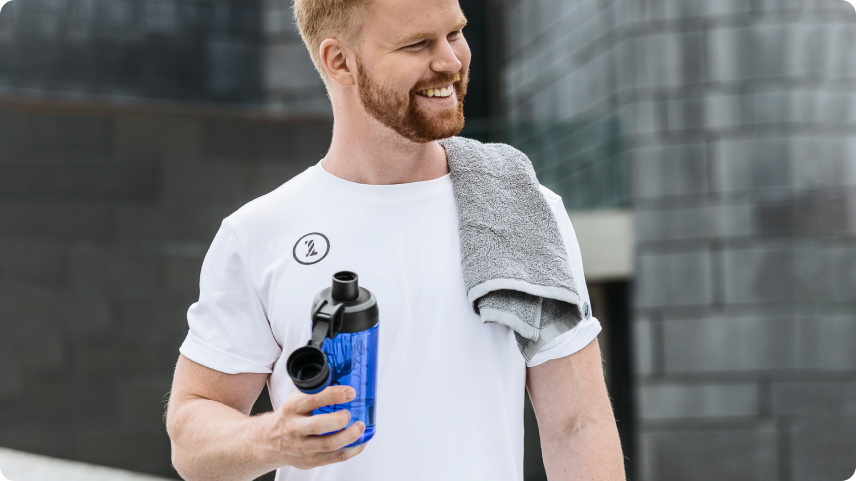
- How to support muscle mass alongside dropping weight
- Why you may have a harder time shedding pounds than others



